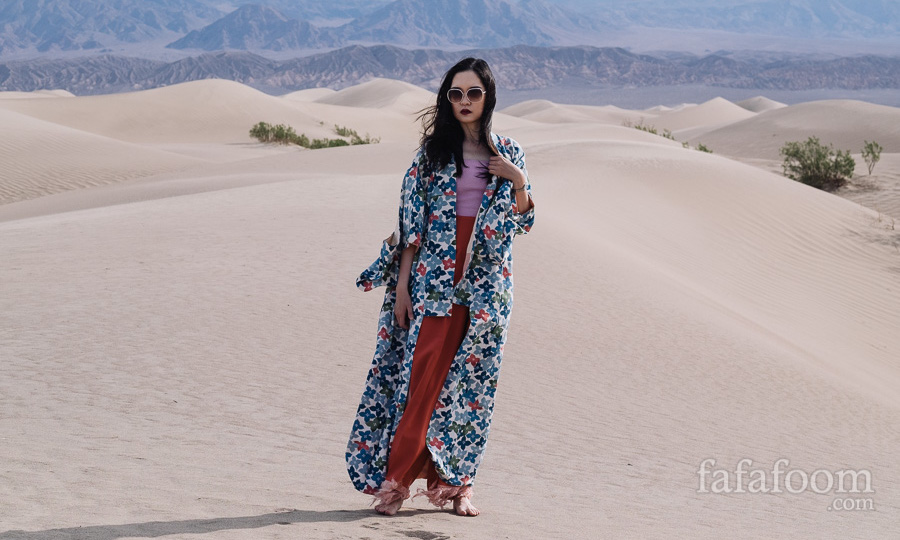I love Japanese kimonos. Not so much the westernized kimono robes / beach cover-ups, but the traditional kimono clothing that Japanese people wear for formal occasions, festivals, and even music concerts.
I always love seeing a Japanese woman wearing a kimono walking down the street in Japan. From their posture, coordination of hair, makeup, accessories, and nails, down to the carefully selected color schemes, kimono wearers exude elegance and poise.
I wanted to be like that, too. So I learned how to wear a Japanese kimono properly with its decorative elements. Let me tell you that the elegance and poise are results of hard work. The number of layers, proper folds, tugs, and knots all contribute to how much elegance and poise one can muster.
Just look at some photos Chris and I captured during our various Japan-related adventures.





From top to bottom, left to right: a wedding scene at Meiji Jingu Shrine, Tokyo; a kimono-wearing visitor near Kiyomizu-dera, Kyoto; a miko at Meiji Jingu Shrine, Tokyo; Enka singer Misaki Iwasa during her appearances at J-Pop Summit Festival 2017, San Francisco (2 photos). Photos by Christian Hadidjaja.
Subscribe to my newsletter
Over the last few years, I got a few vintage kimono clothing and accessories from several second-hand stores and flea markets during our Japan trips. Sometimes I wear them in traditional Japanese way. More often however, I wear them more as a coat substitute when I need a little more “lift” in my outfit.
Japanese kimono designs are gorgeous and very thoughtful – from fabric choices, patterns, embellishments (if any), and even the lining colors. All these factors give subtle or colorful flourishes to an outfit I seldom find with long coats. They are also versatile! Dressy, casual, or anywhere in between, Japanese kimonos are good-looking, comfortable, and unique.
The same can also be said for the obi sash, which is normally worn to decorate the kimono with their beautiful knots (usually on the back). I wear them more like a wide belt or waist corset. An obi’s knot can add more bulk at the back (or front, depending on where I want it to show), but the distractions have been very minimal so far.
Here are several examples of how I don a Japanese kimono to complete my outfit. From visiting national parks to covering annual J-Pop Summit Festival, it’s so much fun to do styling experiments! I will update this post with more photos as I do more of this kind of modern Japanese kimono styling.
Modern Styling #1: Japanese Kimono with bustier and pants
As featured on our Mesquite Sand Dunes, Death Valley NP photoshoot. I absolutely love what I wore that day. Everything came together really nicely like it’s a divine intervention. The desert location and strong wind also made this experience extra special!



Modern Styling #2: Japanese Kimono with t-shirt and jeans
I wore this outfit on the first day of J-Pop Summit Festival 2016. It’s amazing to see the same kimono gave off a completely different vibe when worn in a more casual way! That pair of jeans is MASSIVE and heavy, so I had to secure it with a belt. It’s such a cool statement piece though, so I don’t mind.



Modern Styling #3: Japanese Kimono with dress and obi sash
I wore this outfit on the first day of J-Pop Summit Festival 2017. I wasn’t sure if it would work when I put it together hastily that morning, but I thought it turned out beautifully. The v-neck dress has a beautiful pleated texture and it’s so delicious to wear. It’s the perfect background for the striped purple kimono.
The obi belt was knotted at the back (not shown) and decorated with a flower pin on the front. This is the same flower pin I made several years ago. The tabi shoes are from Sou Sou San Francisco store.
Two of my favorite moments of the event are pictured below: with J-Pop duo Yanakiku and designer Hiroyuki-Mitsume Takahashi.

Modern Styling #4: Obi sash with obiage and obijime, short-sleeve top, and midi skirt
This was the first time I wore the obi sash in traditional way with non-kimono outfit. The printed top and colorful tabi shoes (both from Sou Sou) blend beautifully with the obi. For this particular occasion, I chose “kai no kuchi” knot that’s simple and elegant.
Obiage is the sash I wore underneath the obi. It’s quite hard to see because its color is pale green. Obijime is the blue cord knotted on the top of the obi. The result is quite interesting, even when mixed with a long denim coat and newsboy hat. I have to do this more!



If you want quick information about Japanese obi, head over to carlyfromhome.wordpress.com. The writer is a fellow Japanese fashion lover.
For more in-depth information about Japanese kimono and how-tos, go ahead and peruse wafuku.co.uk pages. You will see many, many creative and vivaciously bolder ways the Japanese style their kimonos. So cool!
Last but not least, it’s no secret that we love Sou Sou. Check out Sou Sou US online store when you have a chance!
What do you think? Whether you have a Japanese kimono or not, I’d be interested to hear your opinions. If you are a fellow Japanese kimono lover, how do you do your own styling?
Thanks for reading; until next time,
Musank

